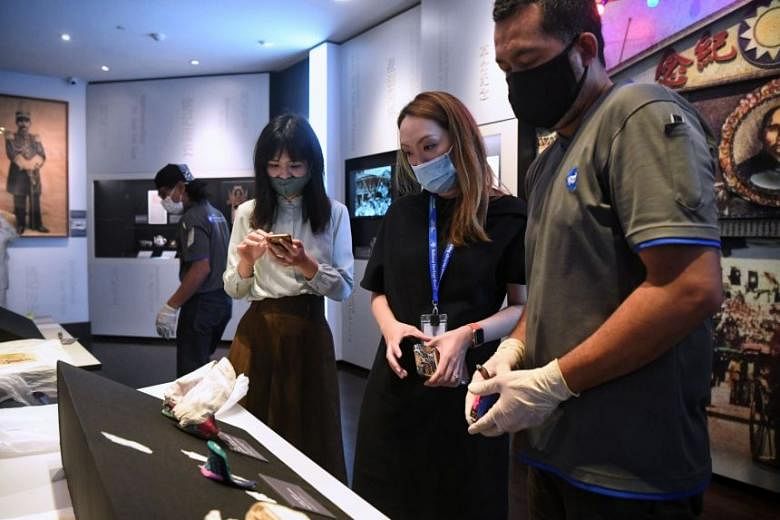As early as 1912, in the wake of the 1911 revolution that overthrew the last imperial dynasty in China, the Singapore Chinese community was already importing items that commemorated the event.
A tea set and bowl used by a family here in 1912 was recently acquired by the Sun Yat Sen Nanyang Memorial Hall in Balestier, and are among 13 new items on display from today at the museum's recurated gallery three.
The crockery, bearing hand-drawn emblems of the new Republic of China, is one of the earliest artefacts showing the intimate link between the Chinese community here and modern China in its nascent years. Production has been traced to Chaozhou, a city in China, during the first anniversary of the 1911 revolution, hinting at how the uprising - and its objects - made its way across the seas to this corner of South-east Asia.
The 13 artefacts were procured over the past year by the museum from Singapore's national collection and private collectors. They speak of a time before education and nation-building efforts cemented a national identity for Singaporeans, during which clan associations still swore allegiance to Dr Sun Yat Sen - venerated as father of the Chinese nation - and New Year greeting cards bearing Dr Sun's idea of "Bo Ai", or universal love, were still circulated among loved ones.
The Sun Yat Sen Memorial Hall has regular revamps every three to five years to keep its materials fresh and to attract visitors. Its last reconfiguration was of gallery four, its biggest gallery, and was completed just last year.
Mr Winston Lim, general manager of the museum, hopes people will take time out to explore what remains a relatively ignored aspect of Singapore's history - even if the artefacts will make a more muted debut against the backdrop of the pandemic. He told The Straits Times during a tour of the premises last week: "The memorial hall looks at that historically significant year, 1911, and shows how Singapore played a role.
"These are not artefacts in China but in Singapore; some were used on a daily basis. They show the mentality of the community and flesh out their day-to-day living."
The memorial hall, opened in 1940, has had a constant message throughout the decades: that people in Singapore played a part in this turbulent episode of China's history, and that the Chinese forging a new path in Singapore were not cut off from those in China despite the geographical distance.
A black-and-white clip from the 2001 documentary Riding The Tiger, also among the new media on show, shows footage of more than 100,000 Chinese in Singapore on the streets celebrating Double Tenth Day - the Republic of China's National Day, Oct 10 - and the victory of China and its allies in World War II in 1945.
A commemorative badge circulated in pre-World War II Singapore and Malaya, featuring an image of Dr Sun on the front and a roaring lion at the back, reveals how local Chinese identities were a composite of their two homelands.
Mr Lim said the Sun Yat Sen Memorial Hall captures the zeitgeist of a whole generation of Singaporean Chinese and remains relevant. "I personally respect Dr Sun for his perseverance (after 10 failed revolutions). It exhibits his generation of Chinese's desire for change amid dissatisfaction to improve their lives," he said.
"Singaporeans can come here to experience that spirit."


